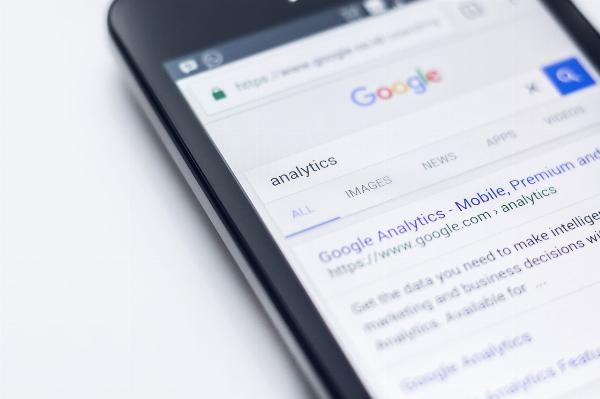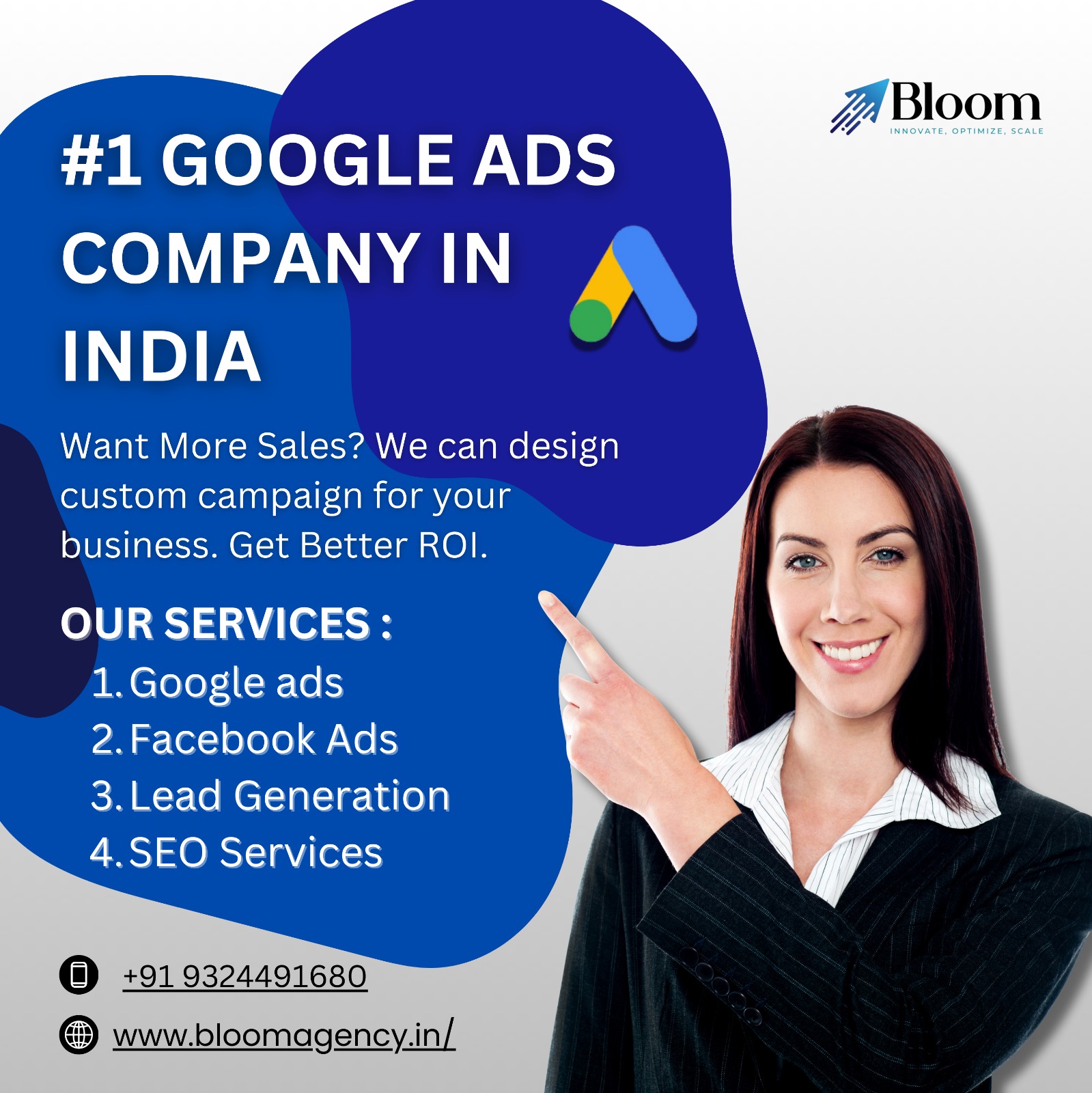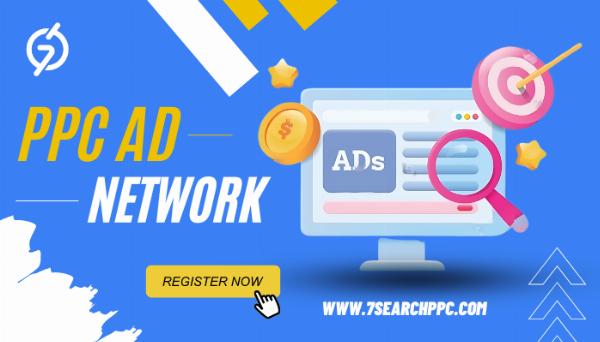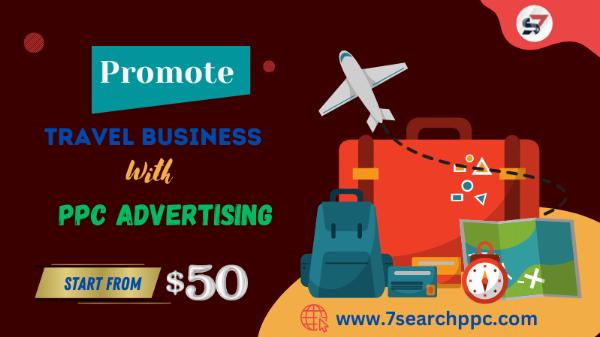Supercharge Your PPC ROI - Advanced Strategies for Maximum Return

Strong 8k brings an ultra-HD IPTV experience to your living room and your pocket.
With the ever-increasing competition in the digital landscape, maximizing your Pay-Per-Click (PPC) return on investment (ROI) is more crucial than ever. In this post, you'll discover advanced strategies designed to help you refine your campaigns, optimize your ad spend, and ultimately drive greater profitability. Whether you’re a seasoned marketer or just starting out, these actionable insights will empower you to elevate your PPC efforts and achieve exceptional results. Let’s dive in and unlock the full potential of your PPC campaigns!
Key Takeaways:
- Targeted Audiences: Leverage advanced audience segmentation to improve targeting and increase relevance, ensuring your ads reach the most suitable potential customers.
- Optimized Bidding Strategies: Implement automated bidding and adjust bids dynamically based on performance data to maximize ROI and minimize wasted spend.
- Comprehensive Analytics: Utilize in-depth analytics to track campaign performance in real-time, enabling informed decisions and adjustments to enhance overall effectiveness.
Identifying Profitable Opportunities
Analyzing Keyword Data for Hidden Gems
Keyword research is the cornerstone of any successful PPC strategy. It involves diving deep into your existing keyword data to sift through the noise and spot those hidden gems that can significantly improve your ROI. Start by analyzing search volume, click-through rates, and conversion rates for your current keywords. You might be surprised to find underperforming keywords that still have a good search volume, which means there’s potential for growth. These keywords can be optimized with better ad copy or landing pages to increase relevancy and conversion rates, thereby delivering an excellent return on your investment.
Once you have a grasp of your existing keyword performance, it’s time to look deeper into long-tail keywords. These keywords often have lower competition and can represent less obvious but highly valuable market segments. Tools like Google Keyword Planner, SEMrush, or Ahrefs can help you find these long-tail opportunities. By targeting specific phrases that align closely with what your audience is searching for, you can drive more qualified traffic to your site. This tactic not only increases the likelihood of conversions but also helps lower your cost per click (CPC), giving your campaigns an additional edge.
Finally, don’t forget to continuously monitor your keyword performance. PPC isn’t a set-it-and-forget-it game; it requires constant optimization and adjustment. Set up regular audits to refine your keyword list, eliminating those that are underperforming and reinvesting in those that show promise. By maintaining this proactive approach to keyword analysis, you will be equipped to identify profitable opportunities that might otherwise slip through the cracks, ultimately enhancing your overall PPC strategy.
Uncovering Competitor Weaknesses
With competition growing fiercer in the online marketplace, understanding your competitors' strategies can provide you with invaluable insights into your own PPC campaigns. Start by conducting a thorough competitor analysis to identify their high-performing keywords and ad copies. Using tools like SpyFu or SEMrush can provide you with a glimpse into the keywords your competitors are bidding on and how much they are paying for them. If you notice that they are investing heavily in certain terms that are only generating mediocre results, this is a ripe opportunity for you to swoop in and target those keywords with more effective, compelling ad copy that resonates with potential customers.
Next, look for gaps in your competitors' offerings. Perhaps they lack extensive content that addresses a specific need or have poorly optimized landing pages that drive down their conversion rates. By identifying these gaps, you can tailor your own PPC campaigns to fill these holes. Offering superior content or more compelling offers can set you apart, leading to higher engagement and conversion rates. It’s crucial to observe where your competitors excel and where they falter, allowing you to capitalize on their weaknesses and position your brand as a better alternative.
To effectively leverage your competitors’ weaknesses, you might even consider A/B testing your ads against theirs to evaluate what performs best in the market. Experimenting with different ad variations can offer you insights into what drivers resonate with your target audience, enabling you to refine your strategy even further. By continuously analyzing the competitive landscape, you’re not only staying ahead but also ensuring your PPC campaigns are fine-tuned for optimal results, leading to maximum ROI.
Optimizing Ad Copy for Conversions
If you want your pay-per-click campaigns to yield substantial returns, optimizing your ad copy is crucial. This means more than merely weaving together a few keywords; it involves crafting a message that resonates deeply with your target audience, compelling them to take action. In a crowded marketplace, your ads need to stand out not only for what they offer but also how they communicate that value. A well-executed ad copy can transform casual clicks into loyal customers, making this a pivotal area to focus on in your PPC strategy.
Crafting Compelling Headlines
Headlines are your first and often only chance to grab attention in a sea of competing ads. A strong headline should be clear, concise, and speak directly to the needs or pain points of your audience. Consider implementing numbers, questions, or even proven formulas like "How to..." or "Top 5..." to create intrigue. For instance, rather than saying "Best Shoes," opt for "Discover the 7 Best Shoes for Comfort & Style." This simple tweak not only informs but also piques curiosity, urging users to click through to learn more.
Beyond grabbing attention, your headline should make a promise that aligns with your value proposition. Think about what problem your product or service solves and include that insight in your headline. If you're selling a productivity tool, you might use a headline like "Boost Your Team’s Productivity by 50% – No Extra Hours Required!" This not only highlights the benefits but also gives prospects a reason to believe your solution can significantly improve their lives.
Finally, consider testing various headlines to see which resonates best with your audience. A/B testing can uncover what phrases or structures yield higher click-through rates (CTR). Combining your insights with compelling headlines will ensure that you're making the most out of your PPC budget by attracting users more likely to convert.
Writing Persuasive Ad Descriptions
Conversions start with a strong ad description that effectively supports your headline by providing crucial information about your offer. A good ad description should complement your headline while addressing the potential objections a customer may have. Aim for clarity and conciseness, focusing on the unique benefits of your offering instead of just listing features. For example, instead of saying, "Our software includes various tools," you could say, "Unlock seamless collaboration with our all-in-one software that streamlines communication, project management, and file sharing!" This clear articulation showcases the value your product brings to the user.
A compelling ad description also encourages urgency. Phrasing like "Limited Time Offer" or "Only a Few Left in Stock" creates a sense of exclusivity that can compel users to act promptly. Additionally, including actionable language—like “Sign Up Today” or “Get Your Free Trial Now”—can be the final nudge some users need to convert. Remember to infuse your messaging with your brand voice to make your ad feel authentic and relatable, helping you establish a connection with potential customers.
Ultimately, your ad descriptions should provide users with enough information to interest them without overwhelming them. Craft these messages carefully, and don’t hesitate to revise based on performance data—what works today may evolve as trends and audience preferences change.
Using Social Proof to Build Trust
With so many options available to consumers, establishing trust is necessary for improving your PPC conversions. Social proof—feedback and validation from actual customers—can play an invaluable role in showcasing the credibility and effectiveness of your product or service. This can be represented in various forms, including customer reviews, testimonials, and even social media mentions. When prospective customers see that others have had positive experiences with your offering, they’re more likely to trust and choose your brand over the competition.
An effective way to incorporate social proof is by highlighting key statistics, such as, "Join over 10,000 satisfied customers!" or "Rated 4.9/5 by 1,500 users!" These figures provide a quantifiable measure of your offering's success and invite potential customers to become part of that growing number. Additionally, consider adding short snippets from customer testimonials directly into your ad copy, showcasing real experiences and building authenticity right off the bat.
It’s especially effective to utilize platforms where your audience frequently engages. For instance, leveraging user-generated content from social media can not only validate your product but also foster a community between your brand and its consumers. By consistently embedding social proof into your ad copy, you reinforce the notion that others trust and value what you offer, making potential customers feel more comfortable and confident in their purchasing decisions.
Landing Page Strategies for Maximum ROI
Keep in mind that your landing page is often the first point of contact your potential customers have with your brand after clicking on your PPC ad. Therefore, it’s paramount to design it with a conversion-oriented user experience in mind. For this, focus on creating a clean, uncluttered layout that allows visitors to navigate easily. Use a hero image or video that immediately grabs attention, alongside an impactful headline that resonates with your target audience. Ensure your call-to-action (CTA) button stands out—consider color contrasts, size, and placement to make it easily accessible. The user interface should guide visitors toward completing the desired action, whether that’s signing up for a newsletter, making a purchase, or requesting a demo.
For optimal conversion rates, your landing page content needs to align seamlessly with the expectations set by your PPC ad. This means that the messaging, value propositions, and benefits outlined in your ads should be consistent with what visitors encounter on the landing page. If they clicked on an ad promising a discount, for instance, make sure that offer shines on the landing page. Employ trust signals such as testimonials, reviews, and security logos to enhance your credibility and reduce friction in the conversion process. Recall, creating a cohesive narrative from the ad to the landing page builds trust and encourages users to take the next step.
For mobile users, the design becomes even more critical. As more people conduct searches from their smartphones, you must optimize your landing pages for mobile devices. This means using responsive design techniques to ensure that your page displays correctly on various screen sizes. Test your landing page’s loading speed as well; slower pages can deter users and cause high bounce rates, ultimately hurting your ROI. In short, by investing in a conversion-oriented user experience, you’re setting the stage for higher engagement and greater returns on your PPC campaigns.
Minimizing Bounce Rates with Relevant Content
With every click on your PPC ad costing you money, the last thing you want is a high bounce rate. Visitors should find relevant content that meets their needs and aligns with what they expect after clicking through from your ad. This means you need to provide valuable, pertinent information immediately upon landing. Start by understanding your audience’s pain points and desires—what is it they seek when they engage your ad? Craft your landing page content to address these needs directly. For instance, if your ad promises a specific solution, make sure you present that solution comprehensively, highlighting benefits, features, and calls-to-action throughout.
With this targeted approach, not only will you keep visitors on your page longer, but you’ll also boost engagement by providing a clear and satisfying answer to their queries. Utilize format techniques like bullet points, short paragraphs, and subheadings to break up the text, making it easier for users to digest information quickly. Supplement your text with images, infographics, or videos to further enhance understanding and make the content appealing. Recall, the content should invite interaction—be it downloading a resource, filling out a form, or even just scrolling through to read more.
Minimizing bounce rates goes beyond just having the right content; it’s about presenting it in an engaging way. Focus on user intent by ensuring the landing page serves the specific needs and interests of the audience segment that clicked on your ad. By delivering relevant content cohesively, you foster trust and encourage deeper exploration of what your brand has to offer, significantly reducing the chances of people leaving your site before taking action.
Leveraging Urgency and Scarcity Tactics
Experience tells us that generating a sense of urgency can considerably influence a visitor’s decision-making process. When potential customers feel that they might miss out on an opportunity, they are more likely to take action immediately. Incorporating urgency-driven language on your landing page, such as “limited time offer” or “only a few spots left,” creates an emotional trigger that motivates users to act quickly. You might also consider placing countdown timers next to limited-time promotions to create a sense of impending loss, which can compel users to convert before it’s too late.
Experience also highlights that scarcity is a powerful tactic. By showcasing limited product availability, you can prompt potential buyers to consider their purchase more seriously. The psychology of scarcity operates on the principle that people desire what they believe they cannot have, and this urgency can drive faster purchasing decisions. Communicating that stock levels are low or that a deal is available for a limited time can work wonders in encouraging immediate sales and enhancing overall ROI.
Maximum success in applying urgency and scarcity tactics lies in authenticity. You must ensure that any claims you make regarding limited availability or time-sensitive offers are genuine. False urgency can lead to consumer distrust and may result in a damaged reputation. By using urgency and scarcity strategically and responsibly, you can create an effective motivator that drives conversions while maintaining the integrity of your marketing practices.
Advanced Bidding Strategies
For those looking to maximize their Pay-Per-Click (PPC) campaigns, understanding and implementing advanced bidding strategies can significantly boost your return on investment (ROI). Utilizing sophisticated bidding techniques helps align your advertising budget with your desired goals, whether they're maximizing conversions, minimizing costs, or striking a balance between the two. In this chapter, we'll examine into three pivotal advanced bidding strategies that can help you supercharge your PPC ROI.
- Maximizing ROI with Cost-Per-Acquisition (CPA) Bidding
- Using Automated Rules for Efficient Campaign Management
- Balancing Volume and Efficiency with Hybrid Bidding
Maximizing ROI with Cost-Per-Acquisition (CPA) Bidding
Maximizing ROI with Cost-Per-Acquisition (CPA) Bidding
Advanced CPA bidding is about setting a target cost per conversion that works for your business model, enabling you to optimize your advertising efforts based on your specific ROI goals. Instead of going for arbitrary cost allowances, you can focus on the financial return each conversion brings, allowing you to adjust campaigns in real time based on performance. This way, rather than just trying to get as many clicks as possible, you’ll be prioritizing high-value conversions that contribute to your bottom line.
Moreover, leveraging historical data enhances the efficiency of CPA bidding. By analyzing prior customer interactions and conversion rates, you can identify which demographics, keywords, and times of day yield the highest ROI. This will not only inform your bidding strategy but can also lead to more cost-effective ad placements that drive qualified traffic to your website. Furthermore, with CPA bidding, you're allowing the automated systems to manage the intricacies of bid adjustments, letting you focus on other areas of the business.
Implementing effective CPA bidding also allows for strong adaptability. The digital landscape is constantly changing, and consumer behavior can be impacted by various external factors. By setting CPA goals, you can pivot based on performance without incurring unnecessary costs on unproductive ads. This adaptability is crucial as it ensures you’re always targeting the right audience at the right time, and allows you to maximize your ROI consistently, not just in spurts.
Using Automated Rules for Efficient Campaign Management
Using Automated Rules for Efficient Campaign Management
For effective campaign management, utilizing automated rules can take the burden off your shoulders while significantly improving efficiency. Automated rules allow you to set specific conditions under which changes will happen automatically. For instance, you can set rules to increase bids on keywords that have a high conversion rate or pause ads that are underperforming after a certain number of clicks. This not only saves you time but also helps you maintain momentum in your campaigns without the constant manual oversight.
Your ability to establish these customized rules means you can align them precisely with your business objectives. Whether it’s setting rules around daily spending limits, pausing ads when they exceed a certain cost per conversion, or adjusting bids based on time, the control is firmly in your hands. This operational approach can lead to better resource allocation, letting your budget work smarter and propelling your ROI further into profit territory.
The real beauty of automated rules lies in their capacity for precision targeting. By setting specific criteria, you can ensure that your campaigns are hyper-focused, targeting only the most promising opportunities. This not only minimizes waste but also maximizes your visibility and conversion rates, making it an indispensable tool for any serious PPC strategist.
Balancing Volume and Efficiency with Hybrid Bidding
Balancing Volume and Efficiency with Hybrid Bidding
Maximizing volume while maintaining efficiency is a common challenge in PPC advertising. Hybrid bidding strategies allow you to capitalize on both objectives, blending the best of different bidding methods to create a well-rounded approach. By combining the advantages of manual bidding and automated bidding, hybrid techniques empower you to adapt to market variations while still allowing for the nuanced control that comes with manual bids.
What makes hybrid bidding particularly effective is the ability to set different parameters based on various performance indicators. For example, you might use automated rules to capture low-hanging fruit opportunities while employing manual bidding strategies for high-value keywords that warrant a more hands-on approach. This dual strategy allows your campaigns to be responsive and adaptive, giving you a strategic edge in highly competitive markets.
Moreover, hybrid bidding provides room for experimentation without risking a significant portion of your budget. You can test different combinations and strategies to see what yields the best results, allowing data-driven decisions to guide your bidding practices. This continuous analysis and adjustment are crucial for refining your tactics and ensuring optimal ROI across all channels.
More about Balancing Volume and Efficiency with Hybrid Bidding
Strategies that meld these two bidding approaches are crucial for long-term success in PPC. By comprehensively analyzing performance data, you can uncover valuable insights that inform your bidding decisions, helping cultivate a balance that not only drives traffic but also converts it. Harnessing the strengths of both methods can create a robust and flexible bidding strategy that stands up to changing market dynamics.
Ad Extensions for Enhanced Visibility
Once again, you should consider the potential of ad extensions to elevate your PPC campaigns. Ad extensions are not just an accessory; they are a game changer that can significantly enhance your ad's visibility and overall performance. When successfully integrated into your ad strategy, these extensions provide additional information that can make your ad stand out among the countless others competing for the same audience. By maximally utilizing ad extensions, you not only improve your click-through rates (CTR) but also create a more informative and engaging experience for potential customers.
Leveraging Sitelinks for Increased CTR
Any PPC expert knows that sitelinks can be your secret weapon, giving users more reasons to click on your ad. By simply adding sitelinks, you enable potential customers to navigate to specific sections of your website, be it a product page, a special offer, or customer testimonials. More options mean higher engagement, as users can go directly to what they're interested in without sifting through irrelevant information. The result? Your CTR improves dramatically, leading to a healthier return on investment for your campaigns.
Moreover, sitelinks not only enhance user experience but also allow you to showcase various offerings within a single ad. It’s necessary to select sitelinks that resonate with your target audience, guiding them to sections of your site that align with their needs. For instance, if you’re an eCommerce retailer, linking directly to best-sellers, seasonal sales, or newly launched collections can spark immediate interest. You’re not just presenting a single opportunity; you're providing a doorway to multiple avenues that might convert visitors into customers.
Finally, don't overlook the importance of monitoring the performance of your sitelinks. Utilize analytics tools to assess which links garner the most engagement and adjust your strategy accordingly. This data-driven approach allows you to continually refine your ad extensions, optimizing them for maximum effectiveness. By leveraging sitelinks wisely, you’re setting the foundation for a higher CTR and ultimately, a more substantial ROI on your PPC efforts.
Using Callouts to Highlight Unique Selling Points
Visibility is crucial in today's competitive market, and callouts allow you to highlight the unique selling points (USPs) of your products or services quickly. These brief yet impactful snippets can cover everything from free shipping and 24/7 customer support to exclusive discounts or special promotions. By drawing attention to these key benefits, you encourage users to explore your offerings further. When users see features that directly address their needs, they are much more likely to click through your ad.
This strategy not only increases the attractiveness of your ad but also sets you apart from the competition. In a landscape where potential customers face endless choices, presenting clear and enticing USPs helps you stand out in search results. Each callout can act as a compelling reason for users to engage with your ad rather than opting for a competitor. By clearly communicating the unique advantages of your business, you engage potential buyers right from the search results page.
Moreover, continually refreshing your callouts in line with changing market demands can keep your ad relevant and appealing. Always be on the lookout for new features or benefits to promote, and don’t hesitate to run A/B tests to see which callouts resonate best with your audience. This active management of your callouts can optimally engage users, driving not only clicks but ultimately conversions.
Enhancing Ad Relevance with Review Extensions
Extensions like review extensions can significantly impact how potential customers perceive your ads. When you incorporate customer reviews or ratings into your PPC strategy, you add a layer of credibility that can be pivotal in the decision-making process. These reviews act as social proof, reassuring users that your business delivers quality products or services. In effect, you alleviate any concerns they might have by showcasing satisfied customers who’ve previously benefited from what you offer.
Furthermore, the presence of review extensions can enhance your ad’s relevance. Google takes into account the relevance and quality of your ads when determining ad placements, and positive reviews can help boost your overall Quality Score. Higher Quality Scores can lead to lower costs per click and better ad positions, creating a win-win scenario where your ads perform better at a reduced cost. Take full advantage of this by consistently seeking out reviews and engaging with your customers to encourage more feedback.
Plus, don’t hesitate to include these review snippets across various platforms, whether it’s Google, social media, or industry-specific sites. The objective should always be to gather as much positive feedback as possible, and when you do, make sure to prominently feature these accolades in your ads. By proving your track record through third-party reviews, you significantly bolster your credibility and draw users back to your website, ultimately enhancing your ROI.
Retargeting and Remarketing Strategies
Not every visitor who comes to your website will convert on their first visit, and that's where retargeting ads come into play. By strategically serving ads to people who have already engaged with your brand, you can remind them of your products or services and entice them to return for a second look. This strategy not only broadens your reach but also allows you to improve your conversion rates and, ultimately, your PPC ROI. In fact, research shows that retargeted visitors are 70% more likely to convert compared to first-time visitors, highlighting the importance of a well-crafted retargeting strategy.
Maximizing ROI with Retargeting Ads
With retargeting ads, you can effectively re-engage your audience by showcasing tailored content based on their previous interactions with your brand. For instance, if a visitor viewed specific products on your site but didn't make a purchase, you can serve them personalized ads highlighting those items or similar products. This targeted approach ensures that your ads resonate more with the user, making them feel that these offerings are directly relevant to their interests. The more relevant your ads, the higher the chances are of capturing that elusive sale.
Additionally, employing frequency capping in your retargeting strategy is crucial. You want to reach your audience enough times to remain top-of-mind but not so often that your brand becomes annoying. Finding the sweet spot in frequency can optimize your return on ad spend while not alienating potential customers. Alongside frequency capping, consider setting a timeline for your retargeting campaigns. For example, you might want to target users who visited your site in the last 30 days, allowing you to keep your chances of conversion fresh and relevant.
Moreover, diversifying your retargeting campaigns can lead to even better results. For instance, consider using different ad formats, such as dynamic product ads or display ads, to capture the attention of your audience in various ways. You can also segment your audience based on their behavior—like whether they added products to their cart or simply browsed—allowing for customized messaging that speaks to each group’s unique needs. By rotating your ad creatives regularly, you can avoid ad fatigue and maintain engagement, which is key to maximizing your ROI.
Creating Personalized Remarketing Campaigns
Retargeting doesn't have to be generic; it can be a highly personalized affair. Incorporating user data into your remarketing campaigns can elevate your ROI substantially. When creating personalized remarketing campaigns, you have the unique opportunity to tailor your messaging and offers based on individual user behavior. For example, if a user abandoned their cart, you could send them a specific ad that includes a discount code for the items left behind. This not only feels personal but also creates urgency and boosts the likelihood of a purchase.
Plus, analyzing visitor behavior patterns allows you to create segmented campaigns that target different groups—like first-time visitors, loyal customers, and past purchasers. For instance, you could serve exclusive offers to returning customers while enticing new visitors with introductory discounts. Implementing AI-driven automation can take this a step further, enabling you to create dynamic ads that change based on real-time insights about user behavior. You can ensure you’re presenting the right products to the right audiences at precisely the right time.
Measuring and Optimizing Retargeting Performance
With any marketing strategy, measuring performance is crucial for ongoing optimization. Effective tracking of your retargeting campaigns will allow you to make data-driven adjustments in real-time. Tools like Google Analytics can help you determine which ads are driving traffic and conversions, revealing valuable insights about your audience's behavior. By analyzing metrics such as click-through rates, conversion rates, and cost-per-acquisition, you can identify areas needing improvement and refine your campaigns accordingly.
It’s also vital to implement A/B testing in your retargeting efforts. This strategy allows you to experiment with different ad variations, letting you see which creatives resonate most with your audience. Whether it's a specific call-to-action, a color scheme, or an image, the results from your A/B tests can inform your broader marketing strategy. By continuously iterating and refining your campaigns based on performance insights, you'll be well-positioned to maximize your PPC ROI and drive consistent growth for your business.
Conclusion
Following this guide on advanced PPC strategies, you now have the tools and insights needed to significantly enhance your return on investment. It’s imperative to remember that successful PPC campaigns are built on a solid foundation grounded in data analysis and strategic planning. By diligently monitoring your campaigns' performance metrics and using A/B testing, you can uncover what resonates with your target audience. This proactive approach not only helps you identify the most effective keywords and ad copies but also allows you to pivot quickly when something isn’t working. In the ever-evolving landscape of digital marketing, adaptability is key, and your ability to make data-driven decisions can set your campaigns apart from the competition.
Moreover, don’t underestimate the power of audience segmentation and personalization within your PPC efforts. Taking the time to understand different customer personas and tailoring your messaging to meet their unique needs can drastically improve engagement and conversion rates. Make use of remarketing strategies to re-engage users who have interacted with your brand but haven’t converted yet. Additionally, leveraging platforms like Google Ads’ custom audiences can unlock opportunities to reach potential customers who are more likely to resonate with your offerings. All these strategies combined can create a more efficient funnel, increasing your ROI and making your marketing budget work harder for you.
Finally, always remember that your learning does not stop at implementation. The digital marketplace is constantly shifting, and successful PPC campaigns require continuous optimization and education. Staying up-to-date with the latest trends, tools, and best practices is crucial for maintaining your edge. Invest time in expanding your PPC knowledge by engaging with communities, attending webinars, or following industry leaders. The more you learn, the better equipped you will be to refine your strategies and achieve maximum return from your PPC investments. As you begin on this journey to supercharge your PPC ROI, know that the effort you put into mastering these advanced strategies will yield substantial rewards in the long run.
FAQ
Q: What are some advanced strategies to improve PPC ROI?
A: To supercharge your PPC ROI, consider implementing the following advanced strategies: 1. **Use Negative Keywords:** This helps eliminate unwanted clicks by filtering out irrelevant search queries. Regularly updating your negative keyword list can significantly improve your ad relevance and CTR. 2. **Leverage Remarketing:** Target users who have previously interacted with your website. Remarketing allows you to deliver tailored ads to this audience, increasing the chances of conversions. 3. **A/B Testing:** Continuously test different ad copies, targeting options, and bidding strategies. Use data from these tests to iterate and optimize your campaigns effectively.
Q: How can I measure the effectiveness of my PPC campaigns?
A: Measuring the effectiveness of your PPC campaigns involves tracking key performance indicators (KPIs) such as: 1. **Conversion Rate:** This tells you the percentage of users who completed a desired action after clicking your ad. A higher conversion rate indicates better ad performance. 2. **Cost Per Acquisition (CPA):** Calculate how much you are spending to acquire a customer through PPC. Aim to reduce CPA while maintaining or increasing conversions. 3. **Return on Ad Spend (ROAS):** This metric helps you understand how much revenue you are generating for every dollar spent on ads. Aim for a ROAS that aligns with your business goals to ensure profitability.
Q: What tools can I use for optimizing my PPC campaigns?
A: Several tools can assist in optimizing your PPC campaigns, including: 1. **Google Ads Editor:** This offline tool allows for bulk changes and advanced management of campaigns, making it easier to optimize ads at scale. 2. **SEMrush:** This tool offers features for competitive analysis, keyword research, and tracking ad performance, helping you identify gaps in your strategy. 3. **Optmyzr:** Designed for PPC optimization, it provides automation, reporting, and campaign management tools to help streamline and improve your campaigns. By using these tools, you can enhance your strategy and achieve maximum ROI from your PPC efforts.
Note: IndiBlogHub features both user-submitted and editorial content. We do not verify third-party contributions. Read our Disclaimer and Privacy Policyfor details.








